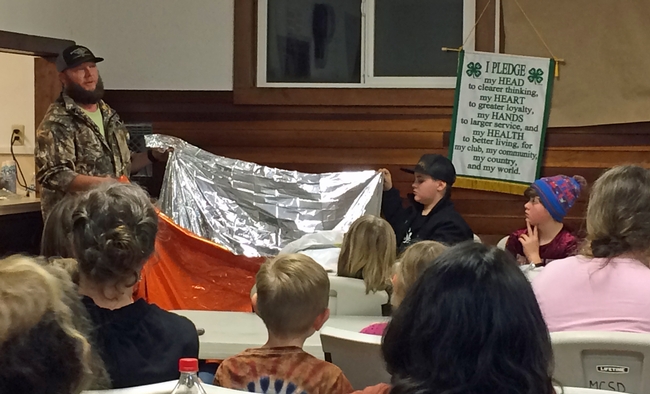The joyful reunion of two 4-H children, Leia and Caroline Carrico, with their parents after spending 44 hours lost in the Humboldt County wilderness in early March has raised awareness about the benefits to youth involved in the UC Cooperative Extension 4-H Youth Development Program.
Established more than 100 years ago, UC Cooperative Extension launched 4-H to teach children research-based agriculture and rural living skills. Over time, it has evolved dramatically, reaching children in urban centers, inner cities, suburbs as well as rural communities with leadership opportunities, life skills, nutrition education and other information to help them grow into resilient adults.
The Carrico children, ages 5 and 8, had participated in a 4-H outdoor training training program. They lived in a rural area and were well acquainted with the redwood forest surrounding their home. Recalling lessons they learned, the sisters stayed in place when they realized they were lost – a key survival skill, said Yana Valachovic, director of UC Cooperative Extension in Humboldt and Del Norte counties. There were more things they learned from 4-H project leader Justin Lehnert's teaching that helped them survive unscathed.
“Justin told them to leave signs. Searchers found granola bar wrappers and deep boot marks. They knew that they should shelter in a dry place,” Valachovic said. “They knew to keep positive and how to find safe drinking water without endangering themselves by drinking from a creek.”
The 4-H program in Humboldt County has been inundated with calls for a curriculum that can be used elsewhere to teach these valuable skills. The UC 4-H Youth Development advisor for Humboldt and Del Norte counties, Dorina Espinoza, is working with Lehnert to develop a project sheet so the survival skills used by the Carrico sisters can be made available in 4-H and other settings to young people throughout the U.S.
The sisters' odyssey and its happy conclusion shows the hoped-for result of the research-based 4-H learning model, Espinoza said.
“The sisters are smart girls,” Espinoza said “They attribute their application of survival skills to family camping trips, movies about people who get lost and 4-H adventures. 4-H reinforced new or existing skills. We know kids learn with multiple exposures. 4-H is a hands-on approach to learning that other settings don't offer.”
In 4-H, children choose “projects” they are interested in. The projects are led by adult volunteers from the community.
“What's different about 4-H is we have adult volunteers who develop partnerships with youth. They partner in learning, leadership and decision making,” Espinoza said. “That's a beautiful part of 4-H.”
Lehnert is a 4-H parent and volunteer who operates a business in Humboldt centered on enjoying the outdoors.
“Justin brings years of personal and professional experience, having completed a Wilderness First Responder Course of the National Outdoor Leadership School. He studied outdoor recreation at Feather River College and has been an outdoor recreation enthusiast for years,” Espinoza said. “We are so very grateful to Justin for sharing his expertise with our 4-H community.”
Californians can find UC Cooperative Extension 4-H projects near them at http://4h.ucanr.edu.
